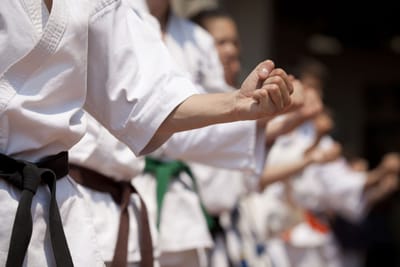ABOUT

Since then, the Meibukan Hombu Dojo has been an integral part of Okinawa Karate. Yagi Sensei was a founding father of the Okinawa Goju-kai and All Okinawa Karate-do Association, both of which the Meibukan Hombu Dojo has been an active part of, since their formation. While Yagi Sensei was alive, he appointed international representatives that are still practicing Meibukan today and are still recognized by the Meibukan Hombu Dojo.
Currently, Yagi Sensei's eldest son, Meitatsu, is Honorary Chairman of the IMGKA (International Meibukan Goju-ryu Karate Association) and travels the world frequently with his eldest son Akihito who is the current President of the IMGKA. Presently Meitatsu is the most senior active Meibukai student of Meitoku Yagi.
There are branches in Australia, Canada, United States, England, India, Iran, Philippines, Russia, Georgia, Brazil, Israel and Hong Kong.
Master Meitatsu universally conveys the philosophical message that some teachers of budo in the world teach how to fight, we of Meibukai rather teach how not to fight. In other words, Meibukai does not practice the emphasis of how to win but rather how not to lose.
There are four suffixes to "Meibu" used: kan, kai, ka, and ken.
Meibukan is the "house of the pure-minded warrior." This refers the style of karate practiced.
Meibukai is the association.
Meibuka describes a karateka practicing Meibukan.
Meibuken is, roughly translated, the "law (or fist) of the pure-minded warrior."
The last one is used in association with the kata.
The Meibukan crest is the kanji "mei," which is the first kanji in the first names of Yagi Sensei and his two sons. Meitatsu’s two sons, Akihito and Akihiro also share the kanji.
The following are three interpretations of the crest.
The kanji mei is a combination of the kanji for sun and the kanji for moon. Using them as separate kanji, you can say "hi to tsuki," which literally means "sun and moon." However, by this pronunciation, it can be interpreted as an expression meaning "one punch." The idea is that a karateka must train with the mindset that he or she may only have one opportunity to end a conflict—the karateka must train seriously and with a sharp mind.
The kanji represent the dualities of nature. The moon is slender, flexible and always changing in the sky. The sun is thick and constant. These ideas are physically represented in the crest—the sun half of the kanji is much thicker than the moon. A karateka must be both like the sun—able to stand ground and be strong—and the moon—be adaptable and soft.
"Ah" and "Um."
Again, two dualities. Um represents defensive nature. When one inhales one must relax and be prepared. Inhaling is for conserving energy and being ready to receive an attack. Ah is the other side of the coin. Exhaling represents attacking, tension and release of breath.
A few years ago a Y was added to the word Goju in order to aid in the correct pronunciation of the word by those of us in the West.
After 5 years of being affiliated with the IMGKA, on March 2 2024, we have parted company, and our club, Heiwa Senshi Kai, while still being Meibukan Gojyu Ryu Victoria, is no longer affiliated with any governing bodies. As such, we have stopped using the IMGKA logo, and now use the logo that was designed specifically for our club. The replacement of all IMGKA logos with the Heiwa Senshi Kai logos will take some time, but should be complete by the end of March 2024.